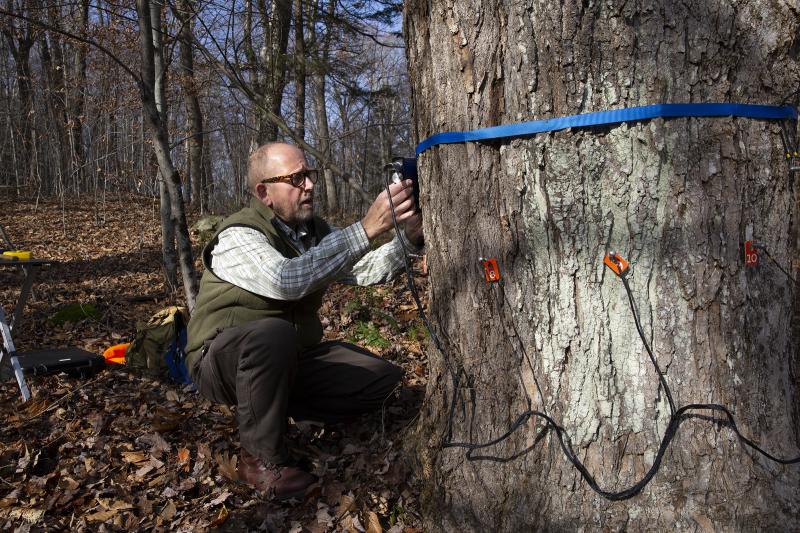How Do You Measure How Much Carbon Is In A Tree?

Forest pathologist Bob Marra demonstrates equipment used to internally scan trees. “If we’re going to look to forests as a way to sequester carbon, we should develop much more accurate estimates of how much carbon is actually sequestered,” Marra said. Photo by Patrick Skahill for Connecticut Public Radio
The latest national climate assessment says forests play a key role in keeping our air clean.
According to the report, America’s forests stored the equivalent of 11 percent of the country’s C-O-2 emissions over a 25 year period.
That’s because when trees breathe they suck up carbon dioxide, release oxygen, and store that leftover carbon in their trunks.
But how scientists determine the amount of carbon stored in a tree is a question open for debate.
When Bob Marra goes into the woods, he takes a tool with him. It’s a hammer — his magic sonic hammer.
